Dress from its leaves and a Geographical Indication (GI) for Vazhakulam variety, pineapple is regaining the popularity among Kerala farmers, which it lost after cash crunch hit the fruit's price.
India is sixth in the world in pineapple production and Kerala is eighth among states. With weather and geographical conditions on its side and bit of planned execution, and Kerala can leapfrog to top slots with ease. Here are the 5 amazing facts:
1. A precious GI tag
Vazhakulam, a small farming town in Ernakulam, has earned a Geographical Indication tag for its pineapples with special taste, sweetness and aroma. The fact that pineapple was brought to India by the Portuguese from Brazil adds to the sheen of Vazhakulam's GI tag.
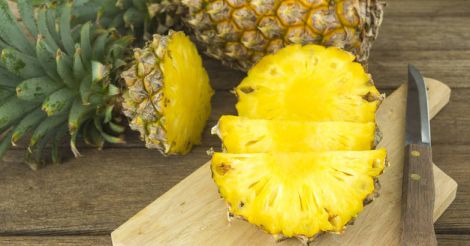 The fact that pineapple was brought to India by the Portuguese from Brazil adds to the sheen of Vazhakulam's GI tag. Photo: Getty Images
The fact that pineapple was brought to India by the Portuguese from Brazil adds to the sheen of Vazhakulam's GI tag. Photo: Getty ImagesVazhakulam pineapple holds out immense potential for export due to its GI status, a shape that is suited for nice packing, the exotic taste and unique sweetness.
2. Pineapple varieties in Kerala
Most of the farmers in Kerala cultivates the Kannara variety of pineapple, of the Mauritian family. Also used are the Q and Queen varieties and the Amrita, which is a hybrid one from the Kerala Agricultural University.
The Mauritian variety, conical in shape and with a heartening aroma and taste, are used as a table dish as well as for juices. The Q variety, with rounded fruits, is suited for preservation. This one has bright yellow flesh without fiber, and is more juicy, making it ideal for canning also.
The Queen variety is best for on-table dishes.
3. Rich in nutrition
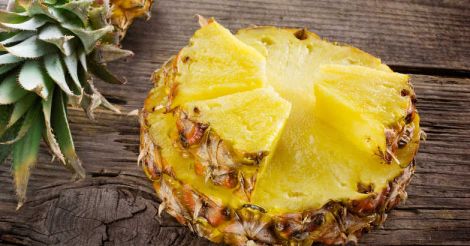 Most of the farmers in Kerala cultivates the Kannara variety of pineapple, of the Mauritian family.
Most of the farmers in Kerala cultivates the Kannara variety of pineapple, of the Mauritian family. 100gm of pineapple contain 87 percent water, 2.3gm of edible fiber, 50mg of vitamin C, high levels of potassium, magnesium, manganese, folic acid, vitamin B1 and B2. It thus takes a place among the world's most nutritious food items.
4. Medicinal qualities
It is the Bromelain enzyme content that gives pineapple its medical quality. The fruit is a cure for diarrhea, especially the indigestion caused by non-vegetarian food. Bromelain splits the protein in our food, making digestion easy. It is used for faster cooking of meat, for enhancing the appearance of beer, and also in certain cosmetic products.
Research has found that pineapple prevents diseases like arthritis and cancer as also inflammation. It also prevents heart ailments by checking the possibility of clotting. Those having arthritis, gout etc can have plenty of pineapple.
Pineapple is also known to be useful in the care of sinusitis, sore throat, surgical wounds, especially in plastic surgery, and in diabetic ulceration.
The fruit has been found to be useful for the protection of the skin, hair, nails, gums, eyes, and feet.
5. Products out of pineapple
Queen, Q and Giant Queen are best suited for pineapple-based products. For preservation, the fruit is best if it is 75 to 80 percent ripe, and with more than half yellowish.
Pineapple should be cleaned and its skin, axis and eyes removed and then cut into small pieces to prepare a pulp. It can be processed in a fruit mill or fruit pulper and kept sealed in food grade jars after adding suitable measures of chemical preservatives. The collection of fruit and its preparation should be done with meticulous care in order to ensure long life. The machinery used, the utensils, and the surfaces should be thoroughly disinfected. Water content in the pulp should be reduced to one-third and it should kept in retort pouches or freezer.
» From leaves
The news is pineapple is not just a fruit to be relished; its leaves can also be used to make fine costumes and fancy items.
» From pulp
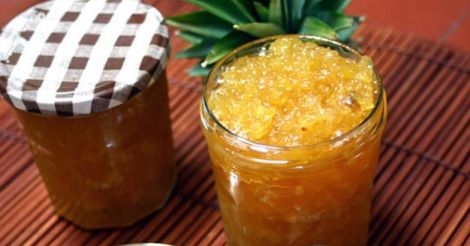
Pineapple jam, halwa, cake, muffins, ice cream etc are favorites in the market. Pineapple farmers can arrest the price crash in the market by supplying entrepreneurs with good quality pulp. Good co-operation and relationship need to exist between farmers and entrepreneurs. If necessary, pulp makers should have the capability to prepare and market products by themselves.
» Juice products
Pineapple squash, syrup, cordial and ready to serve drink (RTS) are juice-based products. Pineapple RTS, when marketed in tetra packs, needs huge investment. Squash, syrup etc need only equipments like fruit mill, steam jacketed kettle with boiler, and filling machine. All this need to be of stainless steel.
» Candy preserve
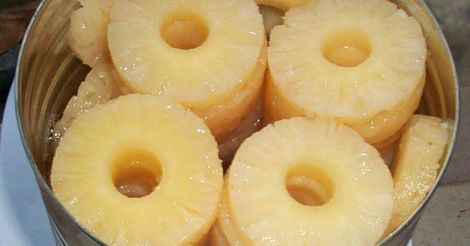
The product has excellent local demand and holds out the potential for export too. The candy, dried directly or in sugar syrup, has good potential in the dry fruit market. It needs only equipment like blancher and drier.
» Canning
Pineapple slices, skin, eyes and axis removed, are cut into round shape with 1.25 cm thickness and filled into cans with sugar syrup added. It has a shelf life of six months to a year and can be taken directly. Ideal addition with cakes, pudding, fruit salad and ice cream.
» Products from waste
Anyone venturing out for a pineapple preservation unit should have a definite idea about handling its waste material. 1Kg of pineapple can leave out almost 500gm as waste. The axis is a part left out, but still edible. This can be used to make candy as well as pickle. It provides abundance of Bromelain enzymes that ensures medicinal values. Bromelain enzyme, if extracted on an industrial scale, holds out great potential.
 Pineapple fiber shirt
Pineapple fiber shirtPineapple skin and eye are good for making strong wine which in turn can be used to make vinegar. Both these products need separate licenses. Pineapple waste can also be used to make biogas and fertilizers.

























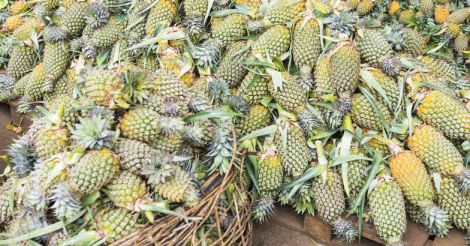 Pineapple is regaining the popularity among Kerala farmers, which it lost after cash crunch hit the fruit's price. Photo: Getty Images
Pineapple is regaining the popularity among Kerala farmers, which it lost after cash crunch hit the fruit's price. Photo: Getty Images